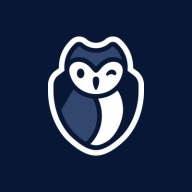

GitGuardian Public Monitoring and Check Point CloudGuard WAF are security tools competing in code exposure alerts and web application protection. Check Point CloudGuard WAF seems to have the upper hand due to its extensive features, despite its higher cost.
Features: GitGuardian Public Monitoring provides real-time code exposure alerts, integrates with developer workflows, and offers supportive service. Check Point CloudGuard WAF provides comprehensive threat intelligence, broad coverage against web attacks, and flexible deployment options.
Room for Improvement: GitGuardian Public Monitoring could expand its monitoring scope, enhance API capabilities, and improve its integration range. Check Point CloudGuard WAF may benefit from user-friendliness, reduced configuration complexity, and quicker setup times.
Ease of Deployment and Customer Service: GitGuardian Public Monitoring is easy to deploy with reliable customer support, making it user-friendly. Check Point CloudGuard WAF offers flexible deployment but requires more time and has less acclaimed customer service.
Pricing and ROI: GitGuardian Public Monitoring is competitively priced with satisfactory ROI, providing value for money with its monitoring features. Check Point CloudGuard WAF has a higher cost, but users see its capabilities as a justified investment for web application protection.


Check Point CloudGuard WAF (Web Application Firewall) is a cloud-native security solution designed to protect web applications and APIs from known and unknown threats. It employs contextual AI and machine learning to prevent zero-day attacks without relying on traditional signature-based detection methods, ensuring that applications remain secure even as new threats emerge.
CloudGuard WAF offers preemptive protection against vulnerabilities by using machine learning to identify and block zero-day threats like Log4Shell and Spring4Shell. It provides precise detection capabilities, minimizing the need for constant fine-tuning and reducing false positives. Designed for cloud-native environments, CloudGuard WAF integrates seamlessly with CI/CD pipelines, supporting automated deployment and configuration through infrastructure as code (IaC) or APIs.
Key Features of CloudGuard WAF:
Benefits of CloudGuard WAF:
CloudGuard WAF is particularly suitable for organizations using modern, cloud-based architectures that require robust, automated security measures for both applications and APIs. Its capabilities are valuable for industries that handle sensitive data, such as finance or healthcare, where compliance and data protection are critical. Pricing and support are typically customized to the specific needs and scale of the deployment, with options for continuous updates and maintenance through Check Point's managed services.
CloudGuard WAF by Check Point provides advanced, AI-driven protection for web applications and APIs, offering automated, precise threat prevention and easy integration with cloud-native environments, ensuring robust security without the need for extensive manual configuration.
GitGuardian Public Monitoring allows real-time GitHub scanning and alerting to uncover sensitive company information hiding in online repositories. It monitors both organization repositories and developers' personal repositories. The solution gives visibility to developers and security teams on this very critical blindspot that are the organization developers' personal repositories on GitHub (80% of leaked corporate secrets on public GitHub come from developers’ personal repositories).
GitGuardian Public Monitoring is particularly interesting for companies with large development teams (above 200 developers) and modern development practices.
GitGuardian Public Monitoring cover 350+ API providers, database connection strings, private keys, certificates, usernames and passwords and intellectual property. It uses sophisticated pattern matching techniques to detect credentials that cannot be strictly defined with a distinctive pattern (like unprefixed credentials). The algorithm has a high precision (91% “true positive” feedback following our alerts, as reported by our users.)
The alerting is done in real-time (a few seconds after the secret was publicly exposed) which allows fast remediation involving in a collaborative way developers, security teams and operations.
GitGuardian Public Monitoring also allows red teams and pentesters to proactively look for sensitive information by performing complex queries on 12 billion documents and metadata from more than 3 years of GitHub history.
GitGuardian Public Monitoring scans public GitHub activity in real-time, helping organizations detect sensitive information leaks in source code repositories. Our solution gives Threat Intelligence and Security teams full visibility over their organization’s public GitHub Attack Surface, by monitoring both organization-owned repositories and developers' personal repositories.
With 80% of secrets and credentials leaks on public GitHub finding their source in developers' personal repositories, GitGuardian for Public Monitoring helps organizations address a critical security blind spot.
With real-time incident notification, Threat Intelligence and Security teams are guaranteed to reach the incident scene before everyone else and take action to mitigate the threat of breaches and intrusions.
We monitor all Application Security Tools reviews to prevent fraudulent reviews and keep review quality high. We do not post reviews by company employees or direct competitors. We validate each review for authenticity via cross-reference with LinkedIn, and personal follow-up with the reviewer when necessary.